Composition and rules for the preparation of nutrient solutions for hydroponics
Growing crops hydroponically is a fairly common method used in greenhouses and areas where soils are contaminated or depleted or lack nutrients. Hydroponics has many advantages over the traditional method of growing, if only because the plants are not afraid of soil pests. To succeed, it is important to correctly prepare the nutrient solution, to know what substances are required to grow various crops.
General rules
Ready-made hydroponic nutrient concentrates are now available at garden malls. They are easy to use by diluting the liquid to the concentration recommended by the manufacturer for a particular crop.
Solutions can be prepared by hand; all the necessary components are also freely sold in garden stores.
In order to make the nutrient fluid, only filtered water is taken. Tap water is allowed to settle for at least a couple of days.
All components are stored separately in glass containers, tightly sealed. Most of the salts can be stored already diluted, with the exception of iron salts - they are dissolved immediately before preparation, since during storage a precipitate is formed, causing an imbalance in the balance of trace elements of the final product.
Knop Hydroponics Base Nutrient Solution:
- calcium nitrate - 10 g;
- potassium nitrate - 2.5 g;
- monosubstituted potassium phosphate - 2.5 g;
- magnesium sulfate - 2.5 g;
- potassium chloride - 1.25 g;
- ferric chloride - 1.25 g;
- water - up to 10 liters.
Ellis's Universal Hydroponic Nutrient Solution:
- calcium nitrate - 10 g;
- magnesium sulfate - 5 g;
- monopotassium phosphate - 3 g;
- ammonium sulfate - 1 g;
- iron citrate - 0.5 g;
- manganese sulfate - 0.02 g;
- borax - 0.02 g;
- copper sulfate - 0.01 g;
- zinc sulfate - 0.01 g;
- water - up to 10 liters.
Ferric chloride, which is part of the solution, gives an abundant precipitate. It is replaced with ferrous sulfate and citric acid - ferrous citrate. Mix approximately the same amount of solutions of ferrous sulfate and lemon.
The recipes shown are suitable for growing all crops.
Solution preparation method:
- The pH of the water is optimized to 5.5-5.6.
- All recommended substances are taken in strict accordance with the recipe.
- Dissolve them separately, each in a small amount of water - 15-20 ml.
- 700-800 ml of prepared (settled and softened) water is poured into a clean jar, prepared solutions are poured in turn, stirring well each time.
- Add water to a total volume of 1 liter.
Do not mix concentrated solutions of components and do not pour them into a common container at the same time - this leads to the precipitation of calcium compounds, which disrupts the overall balance of substances.
How to prepare a solution for herbs
Garden spicy greens - parsley, dill, leaf or head salad - easy to grow in a greenhouse or on a windowsill, using the simplest installations such as "Home Garden" or AquaPot. In order not to suffer with weighing tenths and hundredths of grams of most components, take ready-made liquid or powder formulations or liquid complex fertilizers most suitable for greens, and calcium nitrate.
- The liquid is prepared according to the instructions on the label, the fertilizer concentration is increased by 25% relative to the usual feeding.
- Saltpeter is diluted at the rate of 250 g per 1 l of water and added to fertilizers - 2 ml / l.
During the preparation of the solution, it is convenient to use a conventional injection syringe.
The solution is poured as needed, completely replaced every three months. Simultaneously with the replacement, clean the container from dead root particles.
Hydroponic strawberries
Growing strawberries using the hydroponic method has its own characteristics - the nutrient solution is changed every 2-3 weeks, and its composition depends on the phase of the plant's growing season.
| Element | Amount during vegetation, mg / l | Amount during laying of fruit buds, mg / l | Amount during fruiting, mg / l |
|---|---|---|---|
| Nitrogen | 150 | 80 | 80 |
| Phosphorus | 70 | 45 | 70 |
| Potassium | 140 | 100 | 350 |
| Calcium | 200 | 200 | 260 |
| Magnesium | 50 | 50 | 50 |
| Sulfur | 50-110 | 50-110 | 50-110 |
| Iron | 4 | 4 | 4 |
| Copper | 0,05 | 0,05 | 0,05 |
| Manganese | 0,5 | 0,5 | 0,5 |
| Zinc | 0,05 | 0,05 | 0,05 |
| Boron | 0,5 | 0,5 | 0,5 |
| Molybdenum | 0,05 | 0,05 | 0,05 |
A correctly formulated nutrient mixture has a pH of 5.8-6.2. Knop's solution is often taken as a basis, supplementing it with the elements necessary for each phase.
If the bushes are grown for subsequent reproduction with a mustache, use only the composition for the growing season.
As a nutrient solution for strawberries, you can use ready-made concentrates, for example, Hydroculture (from the GreenWorld series) or the Flora Series complex (FloraGrow line), which are diluted with water in strict accordance with the manufacturers' recommendations.
Tips for growing strawberries hydroponically can be read here.
Cucumber solution
The simplest nutrient composition for growing cucumbers is prepared from the available mineral fertilizers:
- superphosphate - 55 g;
- ammonium nitrate - 29 g;
- iron vitriol - 2 g;
- potassium salt - 29 g;
- water - up to 1 liter.
At the fruiting stage, the content of the components is doubled.
The use of liquid fertilizers of the GreenWorld or FloraGrow series, mentioned above, greatly simplifies the process, allows you to get an excellent harvest of delicious cucumbers both in the greenhouse and at home - on the windowsill or balcony.
A complete replacement of the culture medium is carried out monthly.
How to properly grow cucumbers in hydroponics, read here.
Tomato nutrient solution
To prepare solutions to grow tomatoes, they use Knop's or Ellis's recipes, a composition for cucumbers or ready-made concentrates - liquid or powder.
In case of prolonged cloudy weather, an additional amount of potassium salts is added to the nutritional mixture.
About the nuances of growing tomatoes told here.
How often should you add fresh solution?
The main indicator, which is guided when growing vegetables and berries by the hydroponic method, is the concentration of the nutrient solution (in the special literature referred to as EC), or its electrical conductivity. The indicator is monitored daily using a special device that can be purchased at garden centers. Ok, by the way, it will come in handy when traditional vegetable growing.
Optimal EC values for different crops at different times of the year:
| Culture | EU indicator in summer | EU indicator in winter |
|---|---|---|
| Greens and lettuce, legumes | 1,5-1,8 | 0,7-1,5 |
| Cucumbers and melons | 1,6-1,8 | 1,8-2,2 |
| Solanaceae (tomatoes, cucumbers, eggplants) | 2,5-3,6 | 3,6-5,0 |
When the concentration of nutrients approaches the lower limit, a fresh solution is added or - ideally! - completely replace it.
What can and cannot be grown hydroponically?
All garden greens are grown in hydroponics at home or in greenhouses, bow on a feather... Great yields come from nightshades, legumes, broccoli, strawberries or strawberries, and even bananas.
In addition, most traditional indoor plants are successfully grown, which do not require special conditions for flowering.
Not grown without soil:
- potatoes and all root vegetables, indoor flowers that form nodules;
- plants that bloom in cool or need a low temperature during dormancy;
- mushrooms;
- chlorophytum and cyperus - they grow roots very quickly;
- various types of begonias and balsams, dead particles of the root system of which clog containers and compressors too quickly;
- hydrangeas and bulbs, in which excess moisture leads to root rot.
The successful use of hydroponics mainly depends on the quality of the nutrient solutions. You should not buy cheap components - their low quality will immediately affect the condition of the plants, causing diseases, delayed development, deformation of fruits and reducing taste.
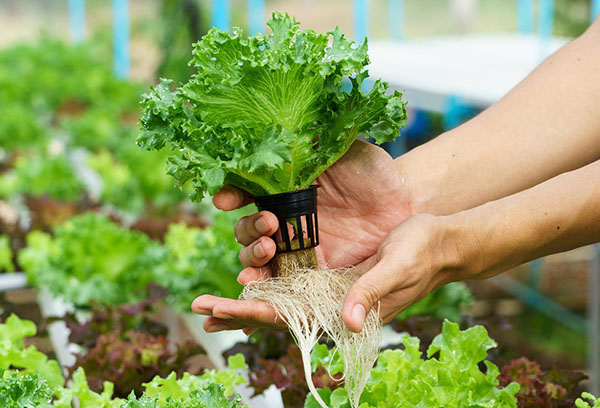
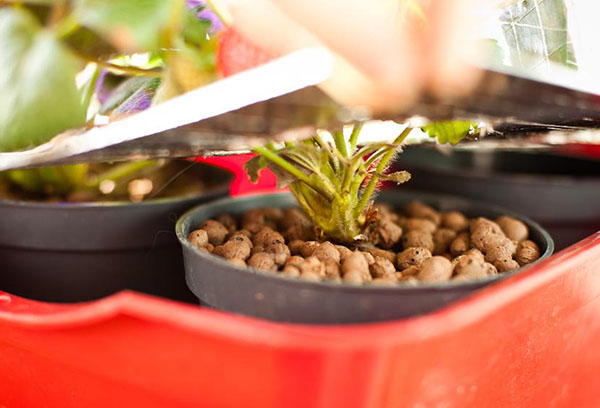
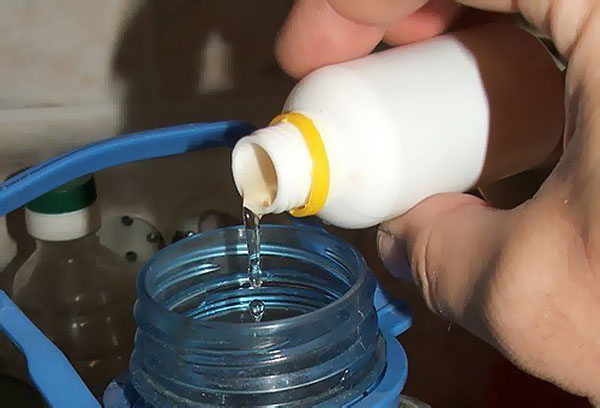
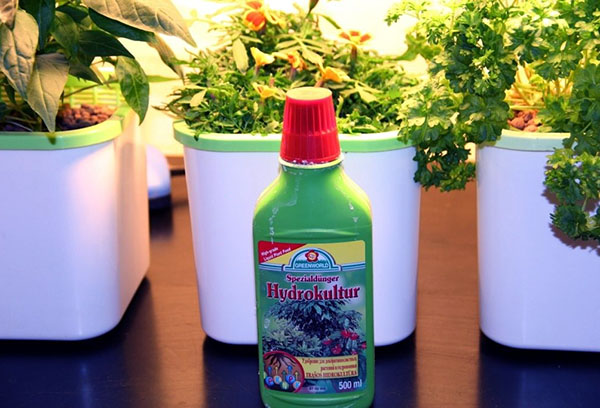
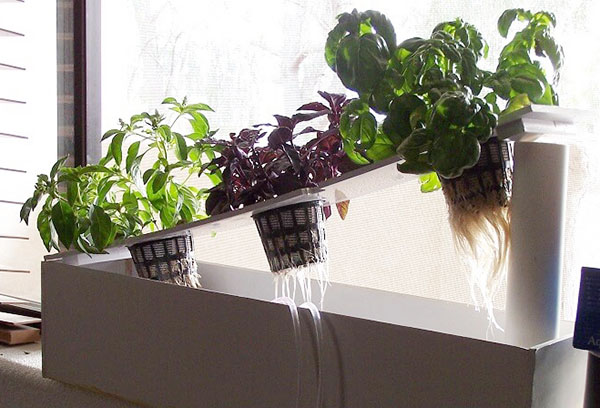
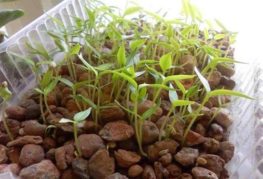
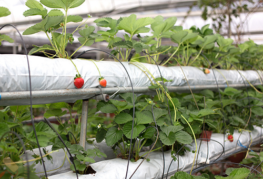
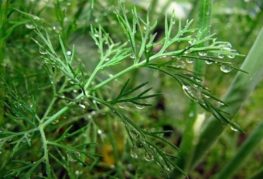
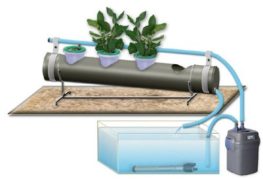
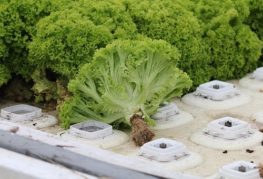
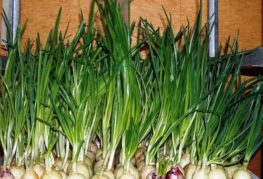
it is realistic to make only a vegetative composition for the flower beds, it is not realistic to create a composition for setting buds and fruiting without the use of calcium chelate, is this real data or fictitious?